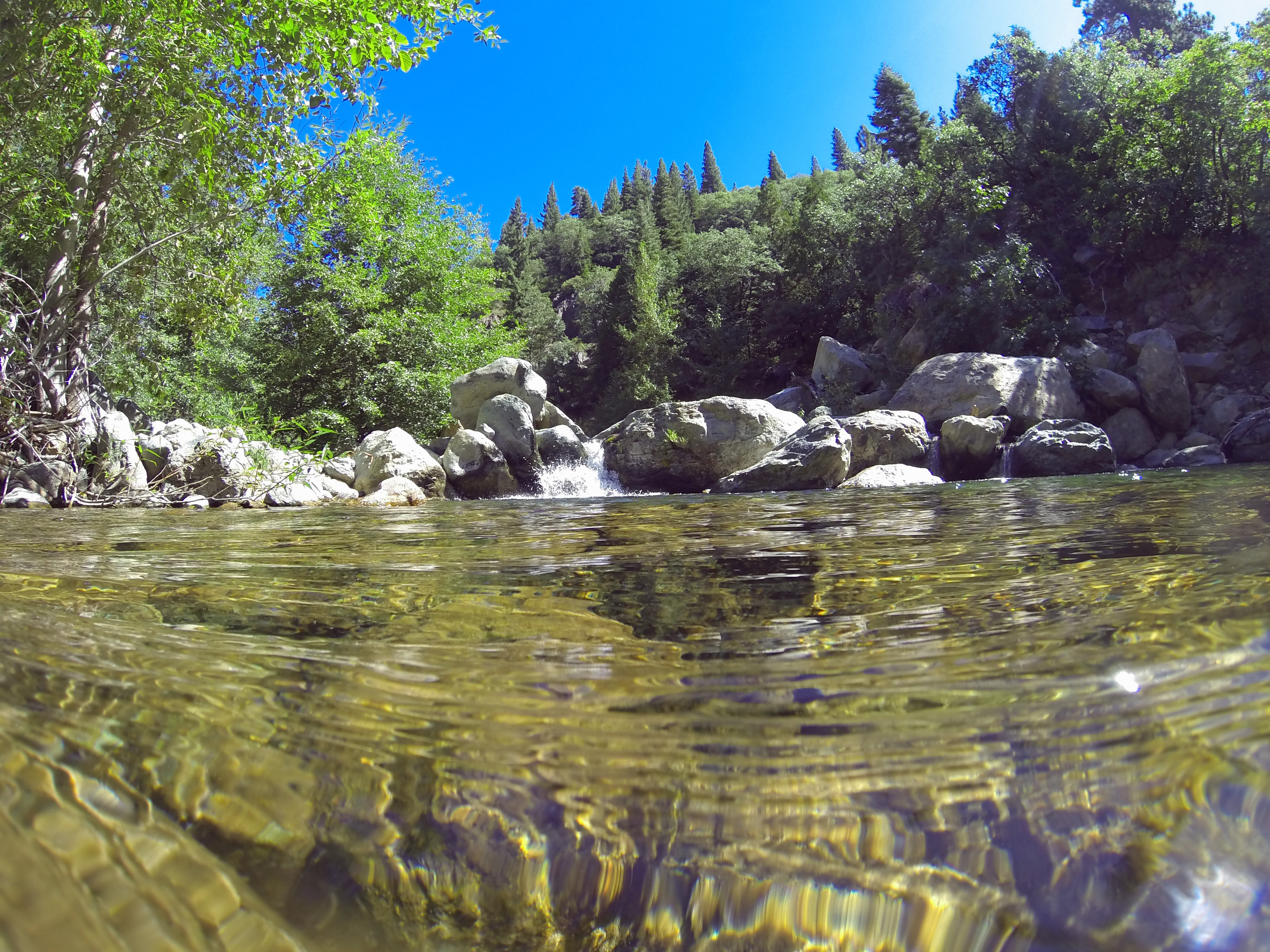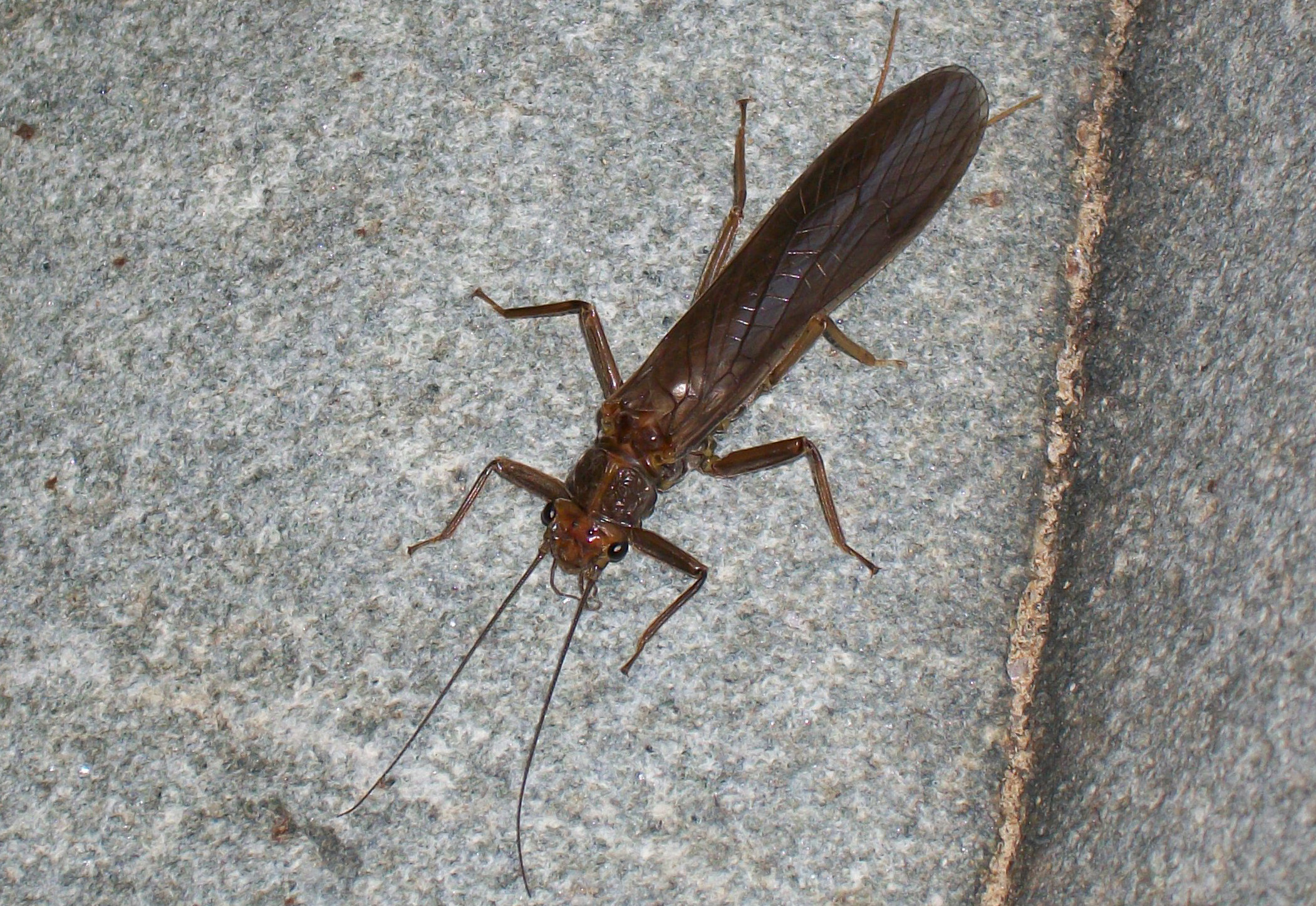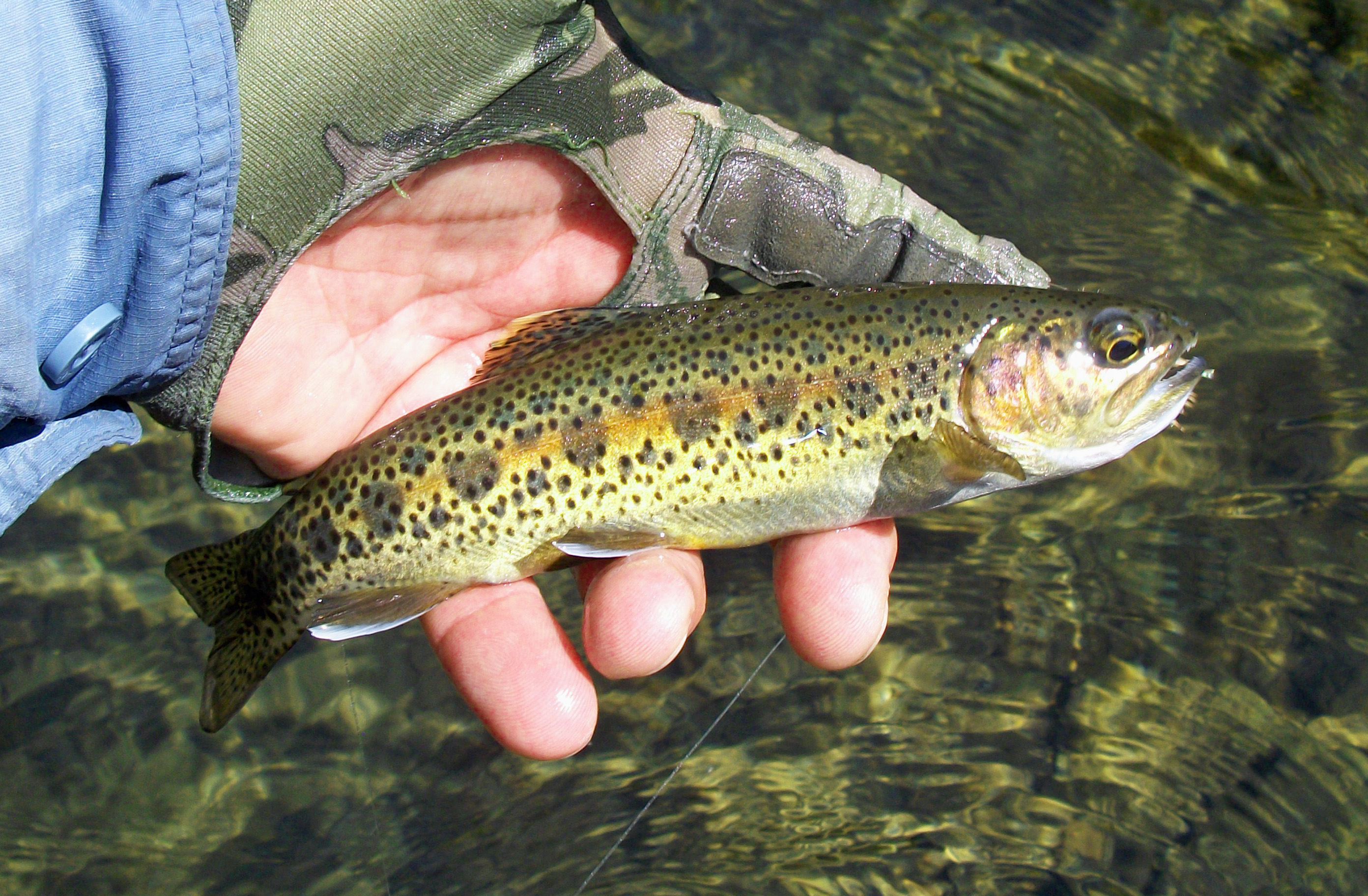Countdown To The Trout Opener: NFYR
We’re counting down the days until Saturday’s statewide general trout opener. Today: North Fork Yuba River.
By Jon Baoicchi
The North Fork Yuba River is a classic freestone Sierra favorite among fly anglers.
Its headwaters start on top of Yuba Pass by way of cold springs seeping out of the ground, and as the river descends down through the community of Bassets, it picks up even more cold water from Salmon Creek and numerous springs and feeder creeks in the area. This upper section from Bassets to the top of Yuba Pass contains brook trout in the 4- to 7-inch range. The river in this section is more of a creek, and its banks are choked with brush and can be very challenging to fish.
But it’s the crystal-clear cold water that makes the trout fishery in the uppermost section so good, even with the heat and the dog days of summer.
The North Fork of the Yuba provides fly anglers with highly coveted “pocket water” – pockets of water on the downstream sides of boulders sewn together in a section of river with a sharp descending grade.
The other alluring feature for fly anglers is that there are deep pools where numerous wild rainbows with the most vivid colors can be found. These trout display dark olive backs with a gold color on their sides, purple parr marks and white-tipped orange fins that glimmer like jewels in the Sierra sun.
BEFORE THE NORTH FORK Yuba River drops into the town of Sierra City, it enters a gorge of tight granite walls that has been carved out over thousands of years by huge volumes of water. This is where Loves Falls is located, and the Pacific Crest Trail crosses the river over a foot bridge. Fishing access is very limited here, but the short hike down from Highway 49 is well worth the eye candy it provides. It’s absolutely stunning, especially during spring runoff.
As the river drops below Sierra City it heads towards the historic mining town of Downieville. This section of the river has deep plunge pools, longer runs and yet more pocket water. The trout are bigger down in this section, ranging from 9 to 14 inches. The California Department of Fish and Wildlife does plant hatchery rainbows in this section, but there are many wild rainbows to be had throughout the entire watershed.
Anglers also have a chance to hook into larger brown trout that are in the system, as some of these fish can be in the 5-pound range. A few anglers are lucky enough to catch them where the Downie River meets the North Fork. The big browns migrate upstream from Bullards Bar Reservoir in the fall and move up the river to spawn, making a temporary home through spring.
Highway 49 runs along the river from the top of Yuba Pass down to the last bridge, which is just below Carlton Campground, about 11 miles below Downieville. In fact, there are 12 campgrounds to choose from, making this area an ideal getaway vacation for the entire family.
There is so much to do and see: hiking, swimming, gold panning, mountain biking, viewing wildlife, and, of course, the great fishing. There are also numerous creeks to explore in the area, and each one has wild rainbow trout that are so much fun to fish for.
The sheer beauty of Haypress, Lavezzola and Pauley Creeks beg to be explored with their rich foliage and canyon water. And don’t forget about the Downie River; it also has a great fishery beneath its waters.
I SPEND MUCH OF my time guiding and fishing on the upper section of the Yuba’s northern prong during the summer season. When other rivers and lakes heat up, you can find my guests and I stalking wild trout wet-wading in the cool water near the Sierra City area. The water temperatures during this time will start at 58 degrees in the morning and reach the mid-60s by afternoon; because of this, the population of wild trout is forever thriving. When it comes to the actual fishing, there are a few rigs that produce the best results. Using subsurface flies under an indicator in the deep pools will produce hook-ups all day long, but the real love of the North Fork is the quality dry fly fishing. Eager wild rainbows from 6 to 12 inches will take dries on top, providing that aggressive visual take that is so rewarding to the angler. The number one rig to use for a dry fly set-up in summer is a No. 10 yellow Stimulator with 18 inches of 5X tippet off the bend of the hook trailing a sunken ant pattern. The Stimulator can imitate a grasshopper, or a golden stonefly, and there is something about ants that trout love and are so crazy for them. Effective dry flies to have in your box are small foam Grasshoppers No. 12, the Royal Humpy Nos. 14-18, yellow and orange Humpies Nos. 14-18, Adams parachute Nos. 12-18, and the Purple Haze parachute Nos. 14-16.
These fish are very eager and will take just about anything you throw at them, though presenting your flies on the seams of fast and slow water is far more important. Finding the right type of holding water is also of importance; anywhere there is soft water in depths of 2 feet or more is key. Caddisflies are the dominant aquatic insects hatching in the evening, and the old standard Elk Hair Caddis, Nos. 12-16 in gray, green and tan, will work just fine. If you want even more success, try using the E/C caddis in the same colors mentioned above; this fly represents an emerging caddis that trout will take readily.
There are special regulations on the North Fork from Sierra City to where Ladies Canyon Creek enters 4 miles downstream. The “Wild Trout” section requires barbless flies or lures only, and a two-fish daily bag limit 10 inches or greater. This section is open year-round. From Ladies Canyon Creek downstream to Bullards Bar Reservoir, the daily bag and limit is five fish 10 inches or greater, and bait is allowed. But from Nov. 16 to the last Saturday in April, special regulations apply and only barbless flies and lures may be used. This section is also open year-round.
HIGH FLOWS AND COLD water temperatures during the winter season result in poor fishing. The resident rainbow and brown trout will take flies once the water temps reach 56 degrees and above.
The North Fork of the Yuba is a fascinating river, with a surprise around every corner. I absolutely love this water. It reminds me of learning to fly fish on the West Branch and North Fork of the Feather River when I was a young boy. It’s a rough-and-tumble kind of a river with a fast pace, and the roar of the whitewater echoes off the canyon walls.
This is where robins stuff their bellies full of stoneflies and take retreat on a low branch of pine trees next to the river. They eat their meal, gaze about and take in the sights and sounds of this most impressive watershed. CS
Editor’s note: Jon Baiocchi has been fly fishing and tying flies since 1972 and is a California-licensed fly fishing guide, published author, educator, innovative tier, and a highly acclaimed public speaker. Jon now owns and operates Baiocchi’s Troutfitters guide service in Northern California where he has been guiding for the last 19 years. Visit his website at Baiocchistroutfitters.com.









